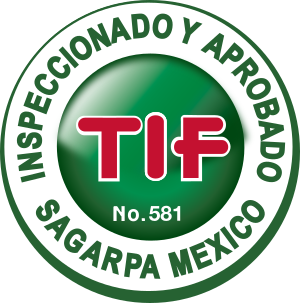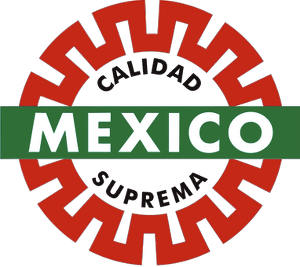Mitos y Realidades
Do not be influenced by what they say, find out how good eating Mexican Pork Meat is

It is fatty: FALSE
With the genetic improvements to the race, Mexican Pork today has 10% less fat than other species.
Transmits Cysticercosis: FALSE
Pollution is produced by the man. In the TIF factories, sterilization is controlled for anyone who comes to work avoiding the contagion.
Increases cholesterol: FALSE
The amount of cholesterol in mexican pork is equal to or less than other meats, as it is rich in linoleic acid, that helps to decrease the cholesterol.
Produces weight gain: FALSE
A tenderloin of Mexican Pork has 139 calories and a chicken breast, 140 calories.
Cysticercosis
Cysticercosis is not presented by eating undercooked pork. According to the National Institute of Neurology and Neurosurgery, there are two ways of acquiring the disease:
The most common is the external infection. The man has the parasite eggs in their feces and contaminate their hands. The other way is the auto internal infection. When a person has a parasite, some eggs reach the stomach due to bowel movements.
Our good practices prevent the contagion. Pigs are confined in production facilities, therefore they have no access to human faeces.
The pig production units have areas of services for the staff, in particular, health, and training on personal hygiene practices.
The water, food and inputs for the formulation of rations to supply to the pigs, are subject to quality control programs aimed at safeguarding the health of the herd.
Fats
Of body fat that contains the pig, 65% is fatty tissue itself (subcutaneous fat, intermuscular and perirenal), and is removed during the cutting process. Less than 15% is streaky in the muscle (marmoleo). Since 1980 the pork has shown reductions of 31% in the fat content, 14% in calories and 10 per cent in cholesterol. Therefore, the greater part of the fat that produce pigs is not ingested by eating pork.
Cholesterol
The pig fat contains a higher proportion of fats mono and poly-unsaturated or "desirable" (close to 70%) and least amount of saturated fats or "undesirable" (between 30 and 40%). Fats poly-unsaturated contribute to maintaining low levels of cholesterol in the blood, to retard the factors that favor the atherosclerosis and help reduce the risk of cardiovascular disease.
On the other hand, saturated fats tend to increase the concentration of cholesterol in blood.
Because its low content of saturated fats, the consumption of 100g of cooked pork loin represents the ingestion of less than 10% of the maximum amount of daily saturated fat recommended by the American Heart Association AHA.
A portion of 100g of the primary cuts of Maxican Pork (leg, loin and palette), has an average content of cholesterol of only 61mg, which represent not more than 20.3% of the Daily Recommended Intake (DRI) in the United States of America.













